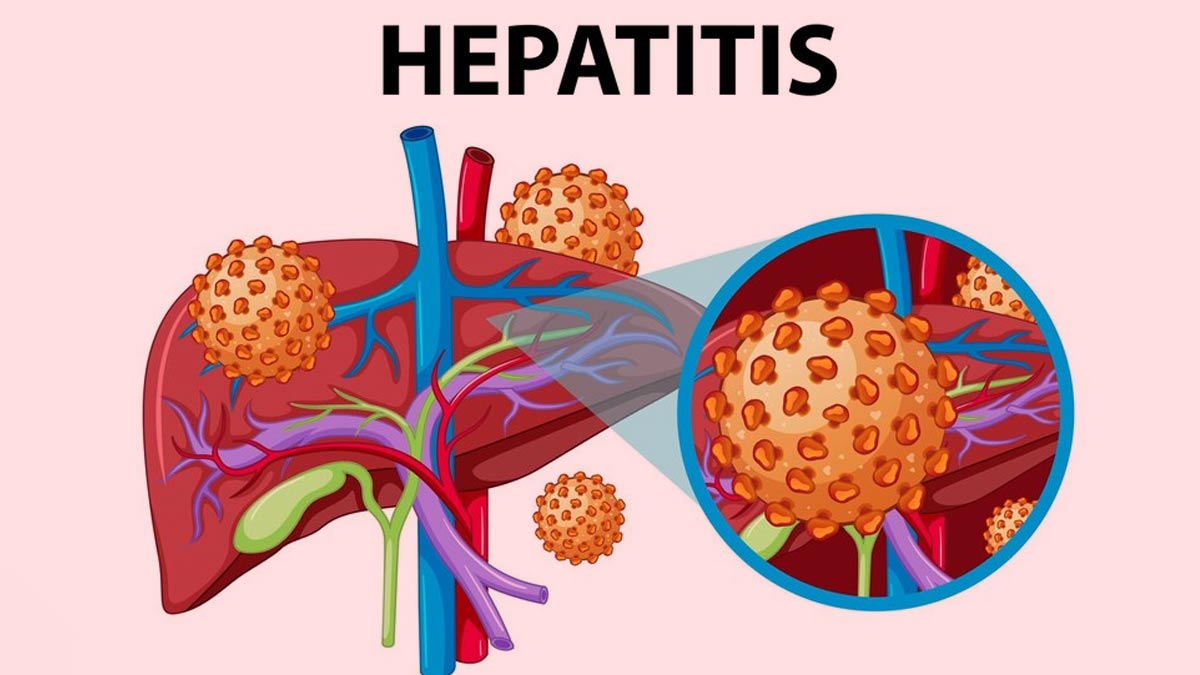
Hepatitis, an inflammation of the liver, is a significant global health issue affecting millions each year. This condition can be caused by a variety of factors, including viral infections, alcohol consumption, or autoimmune diseases. Hepatitis includes a range of viral infections that impact the liver in several ways, leading to a spectrum of health outcomes from mild to severe. On this World Hepatitis Day, observed on July 28, we highlight the different types of hepatitis and their treatments.
Table of Content:-
Types of Hepatitis
Hepatitis viruses are categorised into several types, each affecting the liver in different ways. The five primary types are Hepatitis A, B, C, D, and E.
Hepatitis A

Hepatitis A is caused by the Hepatitis A Virus (HAV) and is typically spread through consuming contaminated food or water. It is frequently associated with poor hygiene and sanitation habits. Symptoms of Hepatitis A include fatigue, nausea, abdominal pain, jaundice (yellowing of the skin and eyes), and dark urine. The infection is typically acute and does not progress to chronic liver disease.
Treatment and Prevention
For Hepatitis A, there isn't a particular antiviral medication. The management generally focuses on supportive measures to alleviate symptoms. Vaccination is the most effective way to prevent Hepatitis A, and it is recommended for travellers to areas where the virus is common and for individuals at high risk.
Hepatitis B
Hepatitis B is caused by the Hepatitis B Virus (HBV) and is transmitted through contact with infectious bodily fluids, such as blood, semen, or vaginal fluids. According to the Centers for Disease Control and Prevention (CDC), approximately 826,000 people in the United States and around 257 million people worldwide are living with chronic hepatitis B.
It can be passed from mother to kid during childbirth, during unprotected sex, or through sharing needles. Hepatitis B can be acute or chronic. Acute Hepatitis B may resolve on its own, while chronic Hepatitis B can lead to serious complications, including cirrhosis and liver cancer.
Treatment and Prevention
Chronic Hepatitis B is treated with antiviral medications, such as tenofovir or entecavir to reduce viral load and prevent liver damage. Vaccination is highly effective in preventing Hepatitis B and is routinely recommended for infants, children, and adults at high risk.
Hepatitis C

Hepatitis C is the result of an infection with the Hepatitis C Virus (HCV) and is primarily spread through direct blood-to-blood contact. It is frequently linked to practices like sharing needles or receiving contaminated blood products. This condition can manifest as either an acute infection, which may resolve on its own, or develop into a chronic illness, requiring ongoing management.
Treatment and Prevention
The treatment for Hepatitis C has advanced significantly with the development of Direct-Acting Antivirals (DAAs) like sofosbuvir and ledipasvir, which can cure the infection in most cases. There is currently no vaccine for Hepatitis C, so prevention focuses on avoiding exposure to contaminated blood.
Also Read: WHO Prequalifies First Hepatitis C Self-Test, OraQuick To Boost Global Efforts For HCV Elimination
Hepatitis D
Hepatitis D is caused by the Hepatitis D Virus (HDV) and depends on the presence of Hepatitis B to replicate. It is spread through contact with infectious blood. Hepatitis D can exacerbate the severity of Hepatitis B, leading to a more severe form of liver disease.
Treatment and Prevention
Managing Hepatitis D involves treating the underlying Hepatitis B infection with antiviral medications. Preventing Hepatitis D is largely about preventing Hepatitis B infection through vaccination, as the Hepatitis B vaccine also protects against Hepatitis D.
Hepatitis E

Hepatitis E is caused by the Hepatitis E Virus (HEV) and is transmitted through contaminated water and is common in areas with poor sanitation. Hepatitis E typically causes an acute infection and is usually self-limiting. According to the National Institute of Allergy and Infectious Diseases, most individuals with hepatitis E recover from the infection; however, studies have found that pregnant women infected with the hepatitis E virus during the second or third trimester experience higher mortality rates (10-30%) and a greater risk of miscarriage.
Treatment and Prevention
There is no targeted antiviral treatment for Hepatitis E. Typically, supportive care is adequate, and most individuals recover completely without additional intervention. Preventing Hepatitis E involves maintaining access to clean water and adhering to proper sanitation practices.
Also watch this video
Read Next
Shreyash Celebrates 18 Years Of Living With Progeria, Expert Explains Causes Of The Condition
How we keep this article up to date:
We work with experts and keep a close eye on the latest in health and wellness. Whenever there is a new research or helpful information, we update our articles with accurate and useful advice.
Current Version